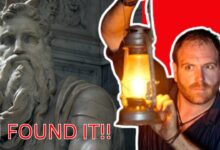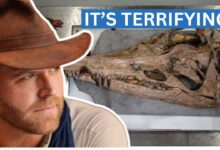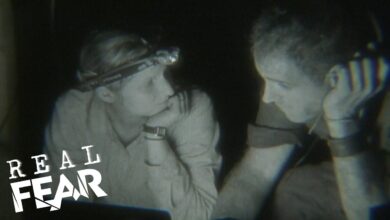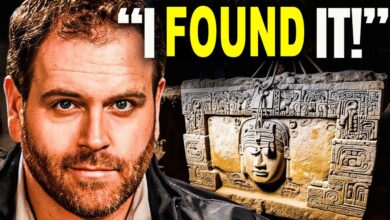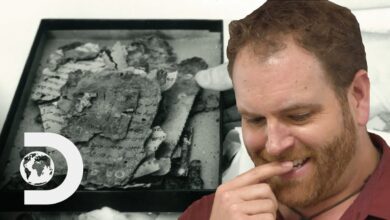The Curse of Oak Island: FASCINATING FIND Revealed by Lab Tests (Season 5) | History
The Curse of Oak Island: FASCINATING FIND Revealed by Lab Tests (Season 5) | History

At St. Mary’s University in Halifax, Nova Scotia,
brothers Rick and Marty Lagina, along with their partner Craig Tester,
have just heard an astonishing scientific assessment of an artifact
recently recovered from the H8 spoils.
So it’s almost like the leather and the textile were bound together for some reason.
Traditionally, one reason would have been to create a book binding.
Book binding? Could the small pieces of parchment along with the fragment of leather binding
really be evidence of an ancient book buried deep within the Oak Island money pit?
This is the other side of the same piece.
So you can say it’s dimpled.
You can see the two sides are totally different.
Very much so. Look at the edge a little bit to see how…
Thanks a lot.
Well, there you go, there’s the fibers.
There’s a little piece right there.
Yeah, so there’s the fibers on the bottom, on the other side sticking out.
Book binding.
That’s really strange.
Yeah, one of the theories about that for a long time is that it’s Shakespeare’s manuscripts
that could be buried at Oak Island.
That’s pretty cool.
Now you’re showing what could be a book binding, I guess.
Who had jumped to that theory right away?
Yeah, jumps to Bacon.
Bacon.
Sir Francis Bacon, the 17th-century British scientist, explorer, and nobleman.
Of the many Oak Island theories, one of the most persistent suggests that Bacon,
a close friend of acclaimed Elizabethan poet and playwright William Shakespeare,
not only financed the printing of the first edition of the bard’s plays,
but also planted numerous clues in the pages,
hinting that an incredible treasure lies buried on a remote island in the North Atlantic.
These clues not only suggest that Shakespeare’s original manuscripts are buried somewhere deep within the money pit,
but that profound connections exist, linking Oak Island to sacred treasures
rescued by the Knights Templar from the Temple of King Solomon during the Crusades.
But what was Francis Bacon doing on Oak Island?
And did he learn of the island and its secrets from his good friend Sir Francis Drake,
some time before Drake’s death in 1596?
I’ve always said, or always believed, that what’s here on Oak Island is not just temporal wealth,
that there’s something other than that here.
Is that ancient knowledge? Is that the Shakespearean folios?
I mean, I don’t know, but what is book binding material doing at those depths in the money pit?
I find that to be more than intriguing.
It’s fascinating, and I think I’m hopeful that there are documents.
I think it’s in what I believe to be the money pit.
We need to try and date it, and like you suggest, Chris,
to have somebody who knows what book bindings are supposed to look like,
or someone who works with textiles.
Okay, we need to pursue this one.
That’s what I’m saying.
I think of all the artifacts or items we brought to Dr. Russo,
the results are very positive.
Most of them would indicate that there’s something significant about H8.
Highly significant.
I think it verifies my concept that we’re in the original money pit with that hole.
Okay, that’s great.
Thank you.
Thank you again.
